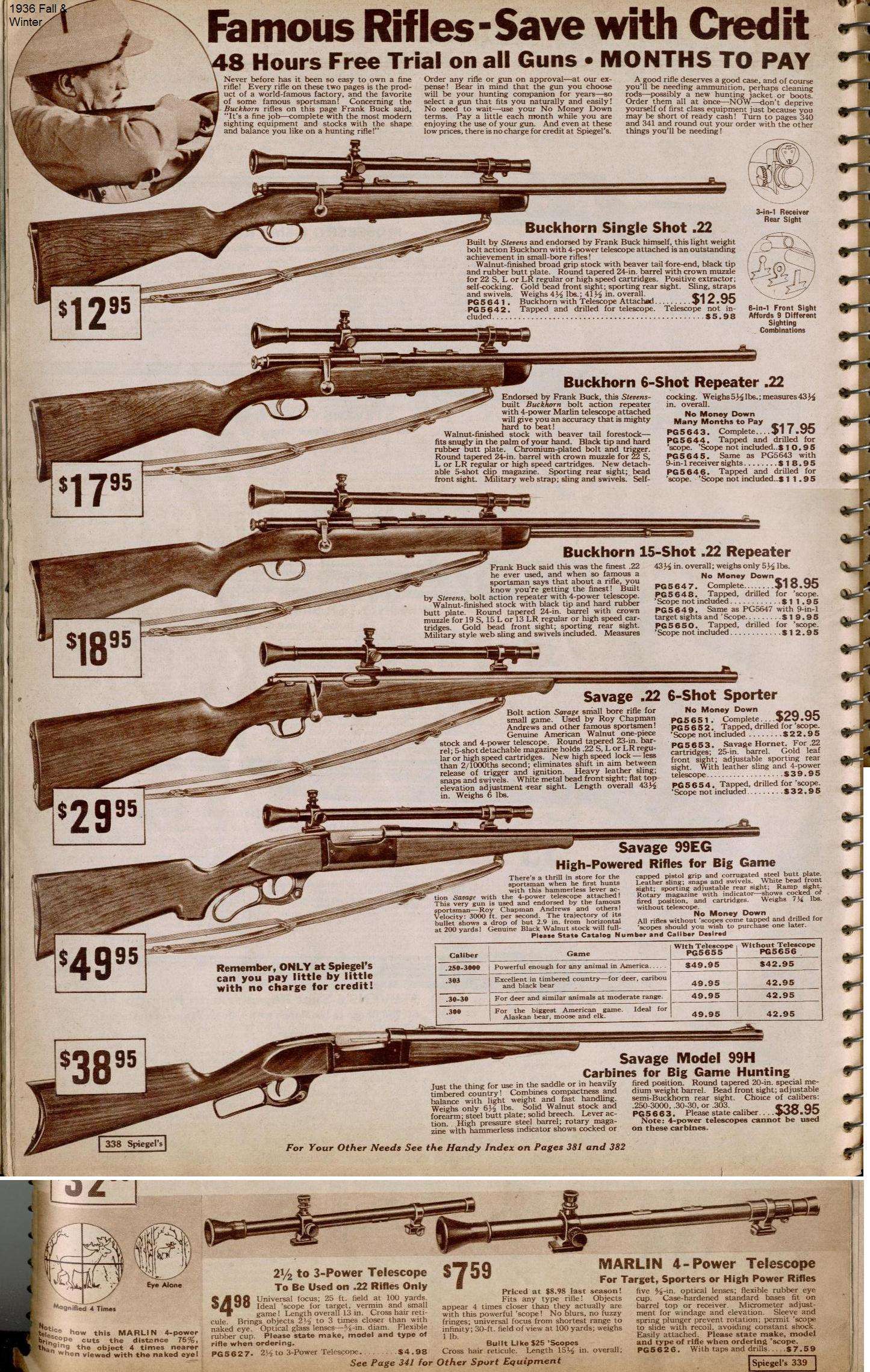I bought this really nice Stevens Model 56 rifle from my LGS a few days ago. From my research these were manufactured between 1933 to 1945 or so. This rifle IMO is in really great shape for being over 88 years old! It is a bolt action rifle with a 5-round magazine. It shoots long rifle, long, and short rifle 22 caliber rounds. It has a 24" bbl with a plainly finished cherry or birch stock. What appears at first glance to be checkering or engraving on the left side of the pistol grip is only burned on pattern, and does not enhance the grip in any way. It has a beaded front sight and a ramp style adjustable rear sight. Pulling the bolt back loads a round and cocks the gun. There is no safety that I can distinguish. The bolt is removed for cleaning the standard way, by pull on the trigger while pulling the bolt back and out. I don't think the Bianchi strap that came with the rifle is original but I could be wrong. The whole rifle looks really great for pushing just south of a century old. Cleaning the barrel before "first fire" told me the rifling is in great shape, as the wire brush twisted easily pulling it through the barrel. "STEVENS Buckhorn Rifle" is engraved at the bottom of the barrel just in front of the stock. On top of the barrel is in large lettering "STEVENS MODEL 56" and in smaller lettering "J. STEVENS ARMS COMPANY CHICOPEE FALLS MASS. U.S.A. 22 SHORT LONG OR LONG RIFLE." Common to guns that old, there is no serial number.
First Fire was very satisfying albeit really brief as it was really cold outside. A tin can and a 5" steel rimfire gong were easily hit at about 10 yards. Not a true test of accuracy but I can tell this gun is more accurate than I can possibly shoot it free hand. The rifle says it will shoot 22 shorts and that's rather obvious if you load them one at a time in single shot fashion. But would the magazine actually feed the shorts in semi-auto fashion? I loaded 5 rounds of shorts in the magazine. It was a bit more difficult than loading long rifle but I made sure the rims were pushed all the way back. Sure enough, the magazine chambered all five rounds without issue. IMO if you find one of these rifles in good shape, it will make a great little plinker, target, or small varmint rifle.
![Image]()
![Image]()
![Image]()
![Image]()
![Image]()
First Fire was very satisfying albeit really brief as it was really cold outside. A tin can and a 5" steel rimfire gong were easily hit at about 10 yards. Not a true test of accuracy but I can tell this gun is more accurate than I can possibly shoot it free hand. The rifle says it will shoot 22 shorts and that's rather obvious if you load them one at a time in single shot fashion. But would the magazine actually feed the shorts in semi-auto fashion? I loaded 5 rounds of shorts in the magazine. It was a bit more difficult than loading long rifle but I made sure the rims were pushed all the way back. Sure enough, the magazine chambered all five rounds without issue. IMO if you find one of these rifles in good shape, it will make a great little plinker, target, or small varmint rifle.







